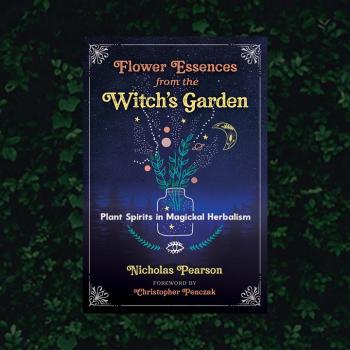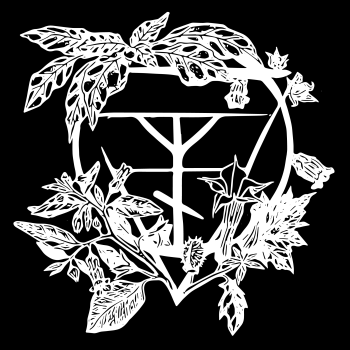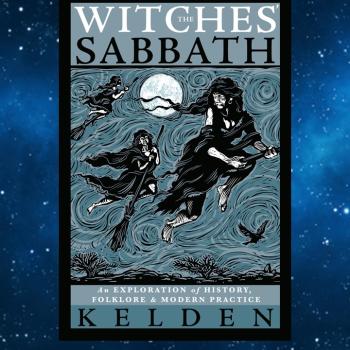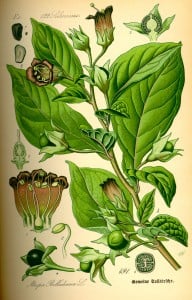
Since I was I child I have had a fascination with plants. I loved working in the garden with my grandfather. I learned a lot of my basic gardening skills from watching and helping him. Of course the plants that I found the most fascinating were the other worldly looking ones and the carnivorous plants with their delicate mouths. I even had my own Venus Flytraps as a child. Another hobby that I took up at a young age was “potion making,” which my grandmother allowed to take place in her kitchen. I made quite a mess converting their galley kitchen into an alchemy lab. The potions that I made back then would look quite absurd to me now, consisting of many odd food items and lots of food coloring. Looking back on the concoctions that I made and the time I spent in the garden I see that my affinity for plant spirits goes back to my childhood. I definitely believe these were early signs of my passion for plant-based formulas.
As I grew into a teenager, I began studying real witchcraft through the available Wiccan and neo-Pagan sources. At the time I researched as much as I could online. Once I could finally drive and purchase my own books I began reading more reputable sources, using the Internet as a secondary reference. Over the course of my studies I have become knowledgeable in a wide array of occult practices from various traditions. I had come across many formulas with seemingly fantastic ingredients like mandrake and wolfs bane. Although, I have always had an interest in poisons, and appreciated the beauty of these deadly plants; I overlooked them initially because of their sinister nature and difficulty in obtaining them.
Further study introduced me to a large body of lore surrounding these baneful herbs from many historical records. Writings on the usage of various poisonous plants in different cultures across Europe, and archaeological findings have shown an extensive history of usage over hundreds of years. Examples of their uses in medicine for numerous purposes, and large bodies of folklore show the important role these plants played in pre-modern society.
When I first began my studies fifteen years ago I was faced with a daunting amount of information from different sources. As I became more proficient at metaphysical concepts and the various magical traditions available I was better able to hone in on what resonated with me the most, focusing my studies on that particular area. There also was not nearly as much information online as there is available today on witchcraft, let alone one as obscure as the Poison Path. Fifteen years ago young witches had to sift through thousands of independently run websites. There was no way of telling if the information being presented was valid. Today there are many reputable forums, suppliers, and publishers to choose from. The Internet has allowed the occult community to become global, allowing for ideas to be shared internationally; also giving scholars access to rare materials otherwise inaccessible.
The Poison Path, also called Veneficium, is a practice whose origins are obscured by time, as far back as the Paleolithic period. There are still many topics that have not been fully explored by occult scholars, and there is much writing yet to be done. Many of the mainstream New Age and Witchcraft 101 books give little explanation, if any, of this quintessential practice. Where the baneful herbs are mentioned, such an aura of fear is created around them that any kind of contact is discouraged. There are a small number of prudent scholars, the likes of Dale Pendell and Daniel A. Schulke, that has given us majority of existing lore emanating from the venefic current. Closed traditions such as the Cultus Sabbati have provided much information from their outer traditions in regards to veneficium. So what is the Poison Path? Where does it lead, and what does its practice entail? This is a question that I will attempt to answer over multiple essays so that I can focus on the many contributing currents of this practice.
There is a lot of well-meaning misinformation and scare tactics being used to steer people away from this topic, likely to protect large publishing companies from any liability. Although, they may have good intentions they are causing others to miss out on a quintessential part of the experience. One of the earliest words relating to the practice of magic come from the Greek word pharmakos and the Latin veneficium, which are directly related to the use of poisonous plants. In antiquity the reality of magical practice is evidenced in laws relating to the prohibition of harmful magic. There was often a blurry distinguishing line between harmful and helpful magic. When looking at the pantheons of antiquity, we see deities for every facet of human existence. Lay people as well as the priesthood made offerings and prayed to a variety of gods and goddesses.
When we look at the deities that are specifically associated with the realm of witchcraft we will notice a common aesthetic. The entities and their corresponding sphere of influence, when speaking of “witch gods,” can be categorized in a manner in which they are similarly related based on disposition and influence. The majority of these deities are in some way associated with the cycle of life and death, the Underworld, ancestral spirits, faeries and the teaching of occult knowledge. The use of Saturnian botanicals is sacred to these chthonic spirits as they represent that over which they rule. The wildwood was often home to these sinister plants; with its dark and dense growth it was home to many spirits and occult happenings. Crossing the threshold from civilization to the untamed wilds is crossing the veil to the underworld, and only the cunning cross into this dangerous territory. The knowledge and power that they return with is part of their verdant congress, imparted by the very plant spirits themselves.
Most of the books available for beginners if they mention these plants at all give the reader little useful information, simply restating the poisonous nature of such plants and the risks involved. Generally, beginners are taught to avoid these plants completely. I personally believe that doing so prohibits an important connection being made between the practitioner and the chthonic forces of the plant kingdom. Witchcraft works on a principle of correspondence. It associates similar characteristics with one another developing various archetypal tropes. The universe is a macrocosm, and within it are infinite microcosms, tiny copies of the universe. No plants better represent the quintessential microcosm of witchcraft than those banes that grow in the witch’s garden.
Allies On The Crooked Path
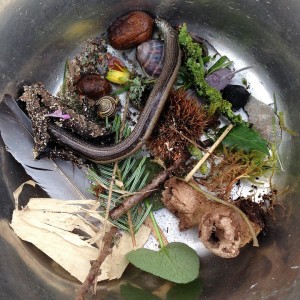
To walk the crooked path of poison requires by its very nature that one work with both hands; to systematically envenom the subtle body through baneful congress and discover also the balms that rebuild the soul requires the ability to heal as well as harm. The path of the poisoner is a path of spiritual growth and partnership through communion with the green spirits of the land, the genus loci. A connection can be formed with these spirits through regular contact using various techniques. It is through the aid of this gatekeeping spirit that the secrets of the plant kingdom may be unlocked.
Each individual plant has its own animating spirit just like all other living things. There is also a collective spirit that rules each community of plants, and this pattern continues in a complex hierarchy known only to the spirits themselves. For example, Atropa belladonna has a spirit unique to her genus. Each plant also has its own individual spark. They are individual entities and collectively they create the plant spirit. The practitioner of the poison path seeks to form lasting relationships with these spirits in order to receive knowledge and other types of assistance.
In addition to forming these spiritual relationships in order to receive guidance, there are many practical applications for the plants themselves. Many of the herbs of bane are also sacred to the gods and goddesses of witchcraft and the chthonic forces of the Underworld. There are also some well-known examples where specific plants are associated with the sorceresses Circe and Medea and the goddess Hecate. Because of the association with these figures these sacred botanicals may be used as a means of offering or evocation of such entities. In addition to the many medical application that these plants have, they also have a rich history of folklore being used for divination, spirit congress, calling up shades of the dead, and protection.
The most infamous family of plants belongs to the Solanaceae category, which includes the mandrake, belladonna and other nightshades, and henbane. All of these baneful allies are known for their use in witchcraft. Historically, they have been used in love potions, and as philtres of bewitchment and magical power. The occult well of ancestral knowledge feeds its wisdom to humanity through the roots of the denizens of the forest, waiting for one with the eyes to see and ears to hear their secrets.
The Witch’s Ointment
The application that makes these plants so controversial was its use in the dreaded unguentum sabbati, or witch’s ointment. These plants were well known for their use in medicine because of their anesthetizing effects, and their use was corrupted through propaganda as science and religion vied for a place in the world. There is documentation of these plants being used historically in various medical preparations and accounts. However, the lack of modern information, up until recently, has caused a lot of confusion about the dangers of working with these plants. There are two main ways I see this information presented. If it isn’t skipped over entirely, their use is discouraged and ineffective substitutions are suggested. There have been accounts that have gone into detail in regards to their first hand experiences under the influence of these herbs, whether ingested intentionally or accidentally. Accidental ingestion was also common, often leaving innocent victims in a state of delirium for hours or even days. Very few authors have felt comfortable enough discussing the primal spirits of these plant familiars.
Few and far between one can uncover a few gems written by authors with their own experiences, who are able to provide practitioners with the nuanced esoteric explanation they are seeking. Finding accounts of practical uses in modern ritual make it nearly impossible for new practitioners to find useful information. Perhaps it is a good thing the Poison Path lies in obscurity, as an inner mystery that only the devout and persistent student of the occult will discover its true nature. Oftentimes, doing one’s own research across multiple fields will yield the most well rounded perspectives where medicine, magic, and botany meet.
It is important that the practitioner recognize that the poison path is not just about physical poison, but the spiritual poisons these plants carry also. Using these botanicals in the correct way can tremendously enhance one’s magical practice. They are often used in fumigations, infusions for anointing, and ointments for topical absorption. Very rarely were these plants intentionally ingested by mouth. The poisons are absorbed much faster, and act more potently when ingested. It is also difficult to determine a correct dosage since alkalinity varies from plant to plant, and also the metabolism of the individual.
Being a practitioner of traditional reconstructions and pre-modern folk magic; I believe it is necessary to continue these practices, and maintain accurate records for future use. Thanks to the various legal documents, trial records, and archaeological discoveries; we have learned that many of these same plants were used historically. It seems that the use of these botanicals in pre-Christian cultures and surviving shamanic practices are some of the best remaining examples of a traditional practice that is still in existence today.
Conclusion
If you are interested in learning more about these plants, and their applications; it is important to gather information from a variety of sources, including: reputable practitioners and/or authors, mainstream scientific and medical sources, and academia. It is detrimental for one wanting to work with these plants that a theoretical understanding of them should be pursued through independent research.
One of the best ways to begin forming a connection with a plant is to grow it or encounter it in its natural habitat. Developing a rapport over the plant’s life cycle promotes a deep understanding that can be achieved only by congresses, and through observing the subtle changes that occur as it grows. Using the dried plant materials in charms are another great way to facilitate a close relationship with the ruling spirit of each plant through maintained contact.
There are many various techniques that can be performed to build a relationship with the green spirits of the plant kingdom. The plant material should not be ingested orally in any way until sufficient research is completed. There are many methods of extracting the essence of power from these allies so that ingestion is not necessary. Using common sense and extra caution is imperative when beginning to work with these allies. As long as they are treated with reverence and respect, they will make powerful partners in a mutually beneficial relationship. The Poison Path is a many faceted practice, and I will go into more detail in regards to more specific topics in the future.





